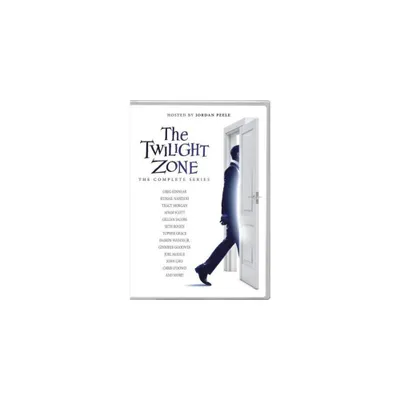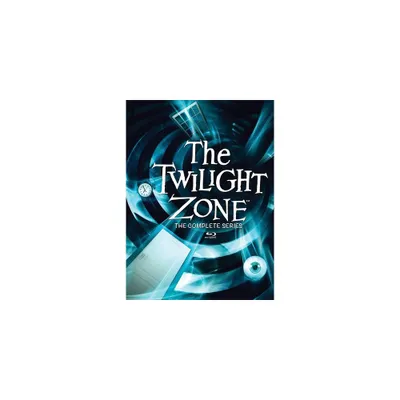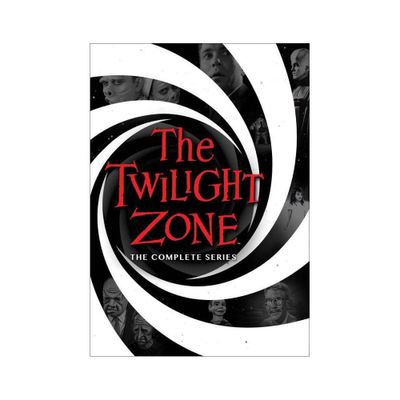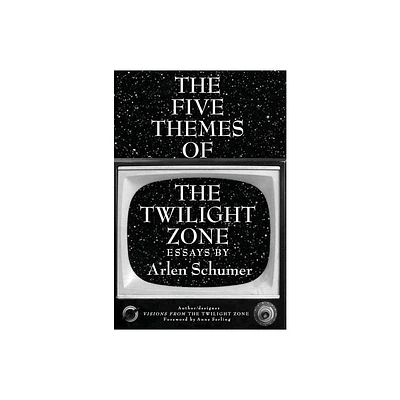Home
The Twilight Zone
Loading Inventory...
Barnes and Noble
The Twilight Zone
Current price: $19.99


Barnes and Noble
The Twilight Zone
Current price: $19.99
Loading Inventory...
Size: Paperback
*Product Information may vary - to confirm product availability, pricing, and additional information please contact Barnes and Noble
Fascinating overview and analysis of Rod Serling’s original
The Twilight Zone
.
CBS’s
(1959–1964) remains a benchmark of serious telefantasy and one of the most iconic series in the history of American television. Barry Keith Grant carefully situates
within the history of broadcast television and American culture, both of which were changing dramatically during the five seasons the series originally aired. At the same time, the genres of science fiction, horror, and fantasy were moving from marginal to mainstream, a cultural shift that
was both part of and largely responsible for.
Grant begins by considering
’s use of genre conventions and iconography to craft its pithy parables. The show shared visual shorthand that addressed both older audiences familiar with Hollywood movies but unfamiliar with fantasy and science fiction as well as younger audiences more attuned to these genres. Rod Serling looms large in the book as the main creative force of
The Twilight Zone,
and Grant explains how he provided the show’s artistic vision and its place within the various traditions of the fantastic. Tracing motifs and themes in numerous episodes, Grant demonstrates how
functioned as an ideal example of collective authorship that powerfully expressed both timeless terrors and the anxieties of the age, such as the Cold War, in thought-provoking fantasy.
Grant argues that the imaginary worlds offered by the show ultimately endorse the Americanism it simultaneously critiques. The striking blending of the fantastic and the familiar that Grant identifies in
reflected Serling’s goal of offering serious stories in a genre that had previously been targeted only to juvenile television audiences. Longtime fans of the show and new viewers of Jordan Peele’s 2019 reboot alike will enjoy this deep dive into the original series’ history, style, and significance.
The Twilight Zone
.
CBS’s
(1959–1964) remains a benchmark of serious telefantasy and one of the most iconic series in the history of American television. Barry Keith Grant carefully situates
within the history of broadcast television and American culture, both of which were changing dramatically during the five seasons the series originally aired. At the same time, the genres of science fiction, horror, and fantasy were moving from marginal to mainstream, a cultural shift that
was both part of and largely responsible for.
Grant begins by considering
’s use of genre conventions and iconography to craft its pithy parables. The show shared visual shorthand that addressed both older audiences familiar with Hollywood movies but unfamiliar with fantasy and science fiction as well as younger audiences more attuned to these genres. Rod Serling looms large in the book as the main creative force of
The Twilight Zone,
and Grant explains how he provided the show’s artistic vision and its place within the various traditions of the fantastic. Tracing motifs and themes in numerous episodes, Grant demonstrates how
functioned as an ideal example of collective authorship that powerfully expressed both timeless terrors and the anxieties of the age, such as the Cold War, in thought-provoking fantasy.
Grant argues that the imaginary worlds offered by the show ultimately endorse the Americanism it simultaneously critiques. The striking blending of the fantastic and the familiar that Grant identifies in
reflected Serling’s goal of offering serious stories in a genre that had previously been targeted only to juvenile television audiences. Longtime fans of the show and new viewers of Jordan Peele’s 2019 reboot alike will enjoy this deep dive into the original series’ history, style, and significance.

















